
Venice caffè and Coffee shop scams is a popular argument. Every now and then, you read in a newspaper, or nowadays someone writes a Tweet or a Facebook blog, about the rip-offs in Saint Mark’s Square. Someone has walked around there when suddenly the urge for a cup of coffee hit him from nowhere. So he sits down at the nearest table, looks over the square, and feels very satisfied with the view. He calls the waiter and orders a cup. The excellent blend goes down like a dream and he pulls up the wallet to pay.
He’s preparing for something expensive, but hey, you only live once …
A coffee in a normal Venice Caffè at the bar costs what, 1 euro?.. 1,20? Here it got to be more, so maybe 2… 3? Then I’ve been sitting down and that’s always expensive, so 4 euros?.. 5? Now really? He pulls out a fiver and calls the waiter…
– That will be 12:50, the man with the white jacket says in a perfectly neutral tone.
The Venice Caffè
In Italy, the normal coffee drinking procedure is as follows. You go into a Bar, preferably with friends, order for everybody and when you get the coffee, you drink it with or without sugar. After that, you argue a bit about who’s going to pay. No, not who’s paying in the sense that it has to be correct and fair. In Italy, the one who says the word caffè is supposed to have invited, and he’s the one paying, but everybody tries to get ahead and pay. If you’re a guest you don’t stand a chance. Just forget it. It took me two years in Italy before I was able to pay for my first coffee.
Now, if you sit down you normally pay a little extra, but always ask. Sometimes they let you sit down with the coffee from the bar, without charging. On Piazza San Marco, that is not the case. On Piazza San Marco you pay, and you pay a lot.
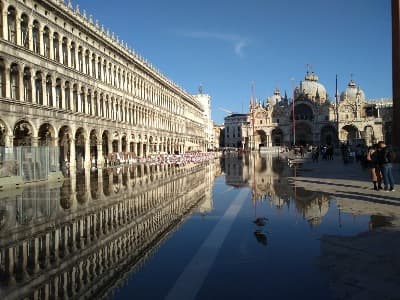
The rule here is: Always ask before. The prices at restaurants and bars in Italy have to be exposed. That doesn’t always happen but as a rule, you should always ask before. On Saint Mark’s Square, the prices are exposed, but still: Ask before. That’s the fourth time I write that.
Caffès in Saint Mark’s Square
On Piazza San Marco there are five Caffès. On the south side, Caffè Florian the most exclusive and Caffè Aurora, the least exclusive. On the north side, there are Caffè Eden, Gran Caffè Quadri, and Gran Caffè Lavena, and Of these Florian, Quadri and Lavena have music. With the music, there’s a cost and this is included in the prices on the menu for the latter two. In the case of Caffè Florian, the music fee is a flat 6 euro on top of the things you order. Actually, if you order something in the morning, you can bring your receipt in the afternoon and you won’t have to pay for the music a second time.
Around the corner, there are two more, but that’s not really Saint Mark’s Square. It’s actually what we call La Piazzetta, and it’s really the oldest part of the Square. There is Caffè Chioggia, which is expensive, has music, and is no good. Then there is the Bar Gelateria Al Todaro. They have some decent Ice cream too.
A tactical consideration
An example. You order a single cup of coffee. That would not be convenient at Florian, as our friend at the beginning realizes after having argued with the extremely calm waiter. But if you eat two or three tramezzini and you wash it down with half a bottle of Prosecco, then it’s possibly better to go to Florian as you pay only once for the music.

If you order to have done just that… To be able to tell the people at home that you had a coffee on San Marco, and you chose the cheapest thing you see on the menu, which would be a coffee. Then choose one on the northern side. But again, if you want to put the check-in a frame over the dinner table, and tell the story about the rip-off to friends and family, then Florian is the way to go. Like my father did. He and my mother went there in the 70s and he kept the receipt of 22.000 lire in a box all his life, as a souvenir.
And… Florian is the oldest Cafè in Italy. It dates back all the way to 1720. That should be worth something. And the view is nice. The Square that Napoleon Bonaparte once called the Drawing room of Europe is the buzzing heart of the magical city.
The Venice Caffè Orchestras
The music is quite alright too. Frankly, I think they deserve the money, the musicians. Although I think most of the 6 euro goes to the coffee shop owner. Still. they play from early morning until late evening, and they do it well. Normally a quartet or a quintet. Piano, Double Bass, Violin, and a Clarinet. They can be more even, but they can also be less.
A fun quiz is to get out in the middle of the square and try to guess what they are playing. With three orchestras playing more or less the same repertoire, it’s what we in the business call spontaneous polytonality…

So if you’re on a tight budget, but still want it all, then have your coffee at the bar inside Caffè Aurora next to Florian. That’s 1:50. Then walk out on the Square and listen to the music for free. But if you do that, you will not be able to keep the receipt of the ridiculously expensive coffee in a box and show it to your children and grandchildren with a smile saying: In Venice, I’ve had the biggest markup of my life…
Establishment/Price in Euro Table service | Caffè Florian south side | Caffè Aurora south side | Caffe Eden north side | Grancaffè Quadri north side | Caffè Lavena north side | Gran Caffè Chioggia Piazzetta | Bar Gelateria Al Todaro Piazzetta sea-side |
Caffè Espresso | 6:50 | 5:00 | 7:00 | 7:50 | 7:50 | 6:00 | 4:00 |
Cappuccino | 10:50 | 8:00 | 11:00 | 11:00 | 11:00 | 9:00 | 7:00 |
Spritz | 14:00 | 9:00 | 13:50 | 15:00 | 15:00 | 12:00 | 9:00 |
Cup of Tea | 11:00 | 8:00 | 11:00 | 12:00 | 10_00 | 9:00 | 7:00 |
Bottled water | 8:50 33cl | 6:00 50cl | 6:00 25cl | 5:00 25cl | 5:00 25cl | 7:00 50cl | 5:00 50cl |
Tramezzino | 11:00 - 11:50 | - | - | 13:50 - 16:00 | - | 9:00 | 5:00 |
Club sandwich | 17:00 | - | - | 23:00 | 13:00 - 16:00 | - | - |
Service, tax and music | music fee 6:00/person on top of all prices | tax and service included | tax and service 15% | tax, service and music included | tax, service and music included | tax, service and music included | tax and service included |
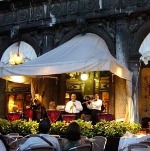
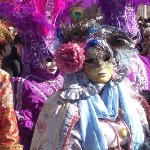
 Just the other day I was talking to a friend of mine. He’s not a young man and he used to live at Cannaregio in the fifties and sixties. Back then there wasn’t any Carnival. No Flight of the Angel on Piazza San Marco, no Water-Shows on Canale di Cannaregio and no invasion of tourists. It was more or less just the ordinary life going on as usual.
Just the other day I was talking to a friend of mine. He’s not a young man and he used to live at Cannaregio in the fifties and sixties. Back then there wasn’t any Carnival. No Flight of the Angel on Piazza San Marco, no Water-Shows on Canale di Cannaregio and no invasion of tourists. It was more or less just the ordinary life going on as usual.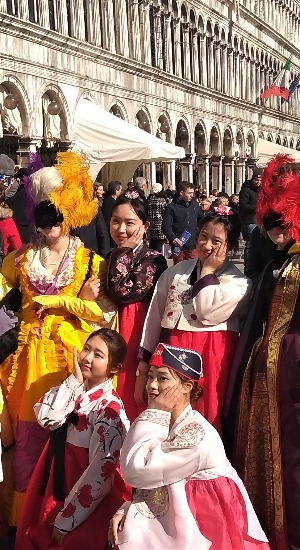 The best time was when it was raining. One can only imagine the poor mother’s face when one of her children got home after a whole day of street war with white flour on a rainy day.
The best time was when it was raining. One can only imagine the poor mother’s face when one of her children got home after a whole day of street war with white flour on a rainy day.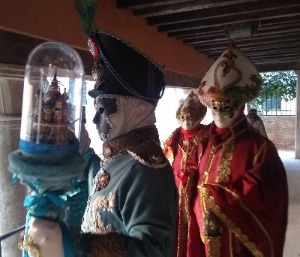 And then, the Venice Carnival isn’t all that uniform. It is not one, single, antique holiday imposed by the Catholic church. It’s not some remembrance of an occasion in ancient times when someone was miraculously saved by a Saint. The Carnival has some very old traditions as a ground plate. On these, they then built the modern Carnevale di Venezia as we see it today. And one of the most important traditions is La Festa delle Marie.
And then, the Venice Carnival isn’t all that uniform. It is not one, single, antique holiday imposed by the Catholic church. It’s not some remembrance of an occasion in ancient times when someone was miraculously saved by a Saint. The Carnival has some very old traditions as a ground plate. On these, they then built the modern Carnevale di Venezia as we see it today. And one of the most important traditions is La Festa delle Marie.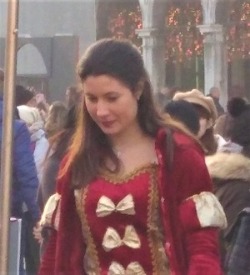 The Dalmatian Pirates
The Dalmatian Pirates The Decline.
The Decline.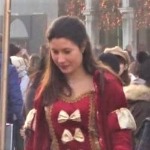
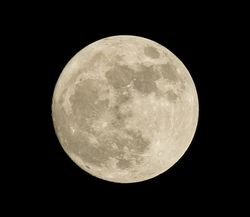
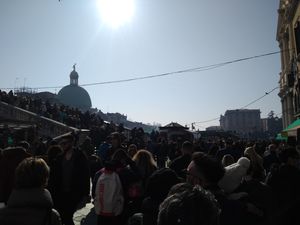
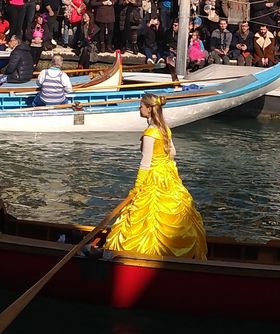
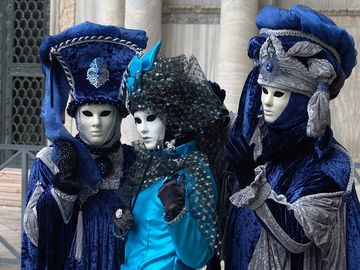
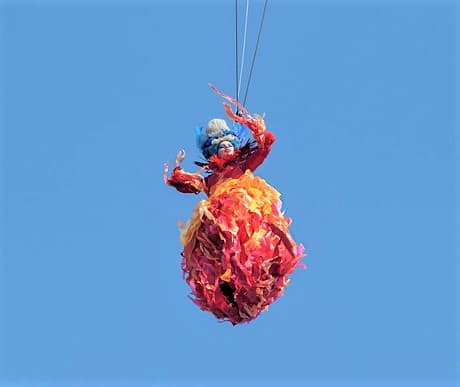
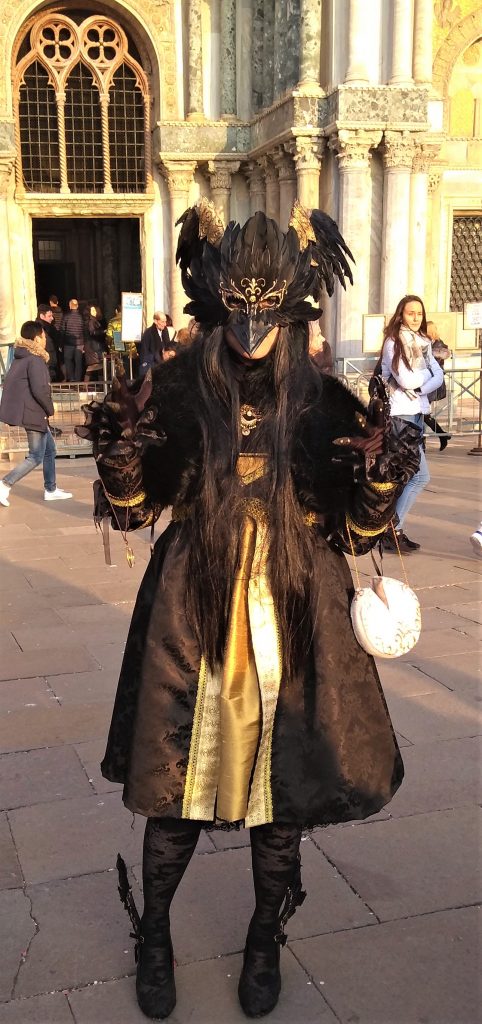
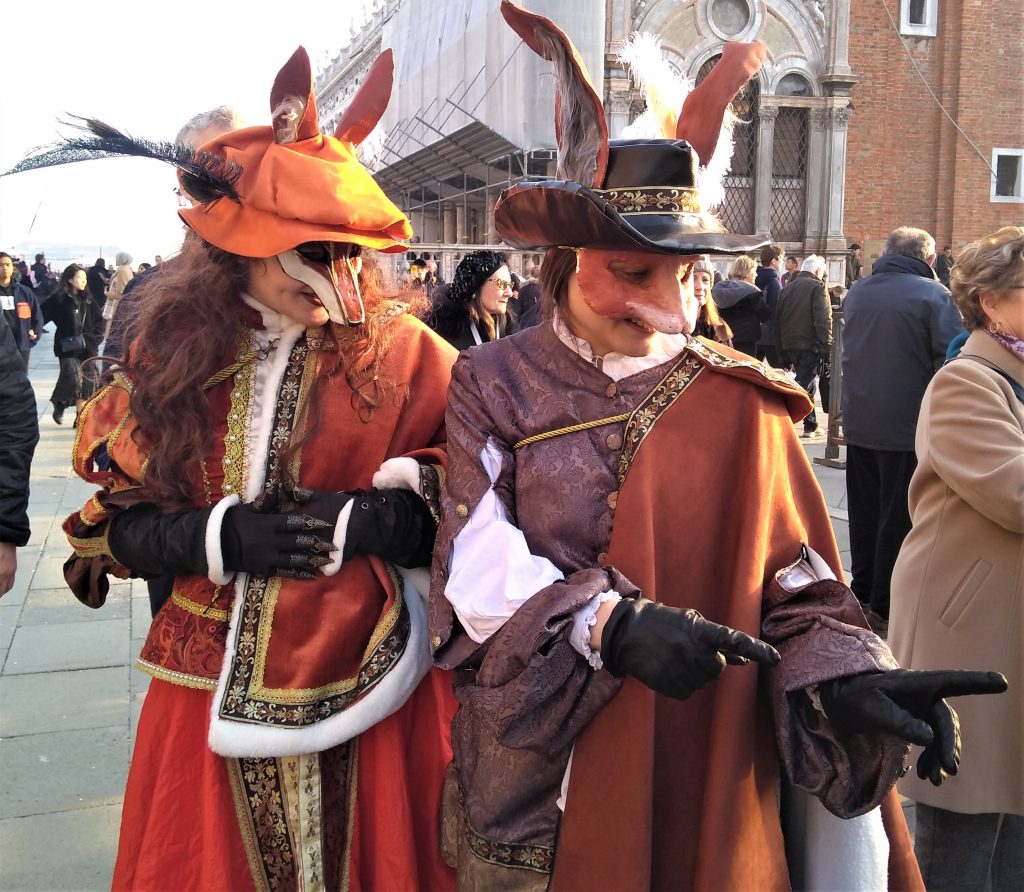
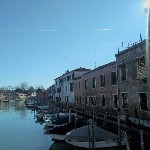
 You follow the Via Garibaldi to the end and there is the canal, that used to continue all the way down to the Riva dei Sette Martiri before they covered it up and made a stone pavement on top. Like many other Calli in Venice, it became a street from being the sea.
You follow the Via Garibaldi to the end and there is the canal, that used to continue all the way down to the Riva dei Sette Martiri before they covered it up and made a stone pavement on top. Like many other Calli in Venice, it became a street from being the sea. Now, if you get hungry you have two options. Walk back to Via Garibaldi, where you have a choice of places to eat, from very local cheap eateries to exclusive gourmet restaurants. Or you could continue walking, admiring the absolute absence of the touristic city we’re used to. Here everything is authentic.
Now, if you get hungry you have two options. Walk back to Via Garibaldi, where you have a choice of places to eat, from very local cheap eateries to exclusive gourmet restaurants. Or you could continue walking, admiring the absolute absence of the touristic city we’re used to. Here everything is authentic.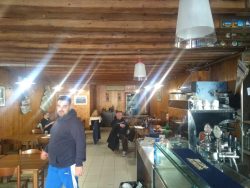 After that, you look around and notice that the tourists are gone. Here you are among the locals. And the English is gone, just like the Italian. Because this is the real Venice, where the real people live. And they speak the Venetian dialect which is very different from Italian. When the waiter comes with your wine and later with your food, you notice that the olive oil is in an old beer bottle. Then you relax. Listening to the sturdy sound of the strange language and enjoying the peace of mind that you get from a simple pasta dish and something to drink.
After that, you look around and notice that the tourists are gone. Here you are among the locals. And the English is gone, just like the Italian. Because this is the real Venice, where the real people live. And they speak the Venetian dialect which is very different from Italian. When the waiter comes with your wine and later with your food, you notice that the olive oil is in an old beer bottle. Then you relax. Listening to the sturdy sound of the strange language and enjoying the peace of mind that you get from a simple pasta dish and something to drink.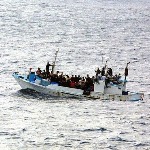
 On January the 2nd a storm was approaching the Maltese waters and the ship’s safety was in danger. And this is the point… Sea Watch 3 was allowed to come closer to the island to take shelter but was still not allowed to enter the harbor.
On January the 2nd a storm was approaching the Maltese waters and the ship’s safety was in danger. And this is the point… Sea Watch 3 was allowed to come closer to the island to take shelter but was still not allowed to enter the harbor.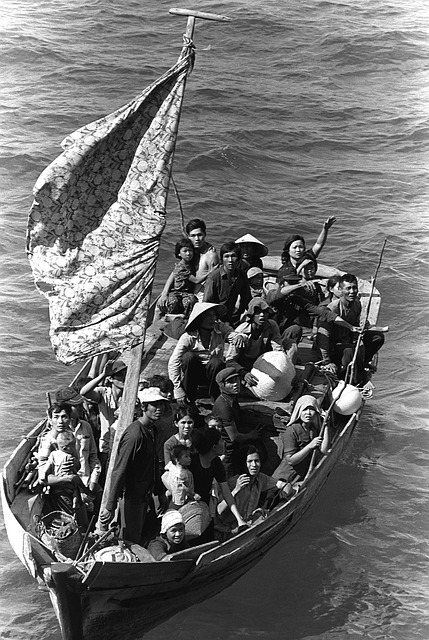 The sea is a hostile environment. As beautiful and welcoming as it can be on a summer’s day at the beach with the
The sea is a hostile environment. As beautiful and welcoming as it can be on a summer’s day at the beach with the 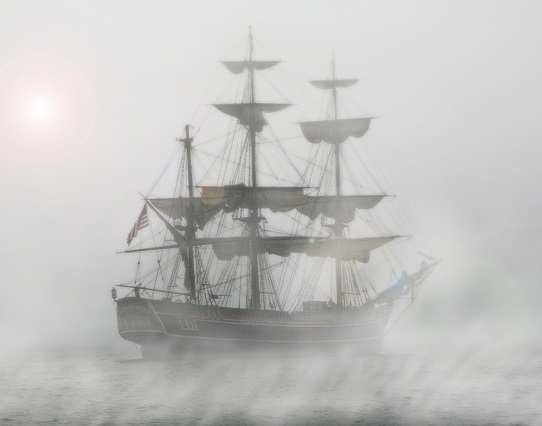 If the Venetian trade ship hit a storm outside Crete, the captain knew that he could seek shelter in the nearest harbor, because the code told him that no one would refuse a boat in distress. And if he picked up a castaway on the way he could leave him at the closest safe port. Maybe there he would then be prosecuted or thrown to the lions… But a ship in need couldn’t be left offshore, and a man saved from the sharks couldn’t be refused to enter the town from the sea. That was the law.
If the Venetian trade ship hit a storm outside Crete, the captain knew that he could seek shelter in the nearest harbor, because the code told him that no one would refuse a boat in distress. And if he picked up a castaway on the way he could leave him at the closest safe port. Maybe there he would then be prosecuted or thrown to the lions… But a ship in need couldn’t be left offshore, and a man saved from the sharks couldn’t be refused to enter the town from the sea. That was the law.